Automotive Power Management Integrated Circuits (PMIC) Industry Report, 2023
Automotive PMIC research: the process of domestic automotive PMICs replacing foreign ones in China in the “crisis of chip shortage”.
Automotive power management integrated circuits (PMIC) find broad application in vehicle intelligent cockpits, autonomous driving, body electronics, clusters and entertainment systems, lighting systems, and BMS. By product, PMICs fall into AC/DC, DC/DC, LDO, driver IC, and battery management IC.
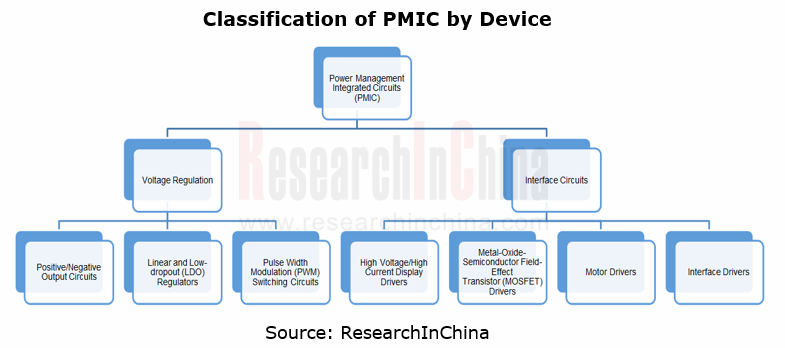
The enormous supply gap in automotive power battery management system AFE ICs creates a strong desire to replace foreign products in China.
Among automotive PMICs, AFE ICs for battery management systems (BMS) are in the shortest supply. The analog front end (AFE) IC is the most important device in BMS, responsible for collecting voltage and temperature of battery cells. AFE IC uses specific algorithms to estimate battery parameters (e.g., SOC and SOH), and sends the results to the control chip.
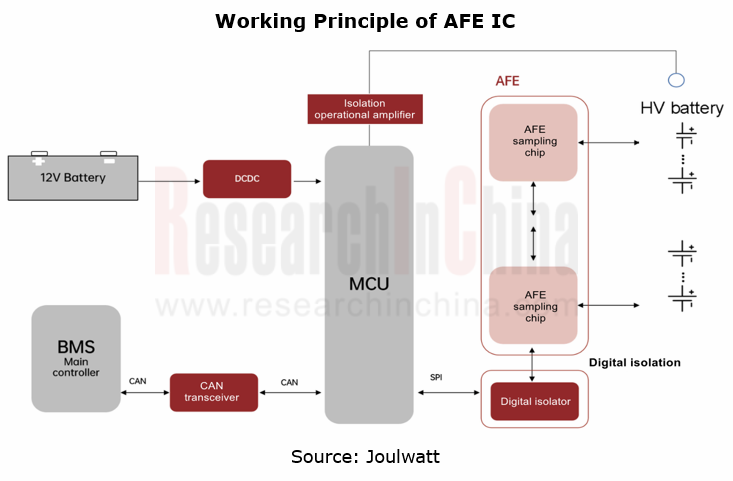
(1) Demand for automotive AFE ICs: in the evolution from 400V to 800V platform, the demand for AFE ICs doubles.
Considering endurance range and charging efficiency of new energy vehicles, mainstream automakers have begun to deploy high-voltage platforms. The evolution from the current mainstream 400V platform to 800V platform has become a megatrend. For higher voltage requires an almost equal proportion of more battery cells in series, the demand for AFE ICs thus surges. It is expected that the platform voltage will increase from 400V to 800V, doubling the demand for automotive AFE ICs.
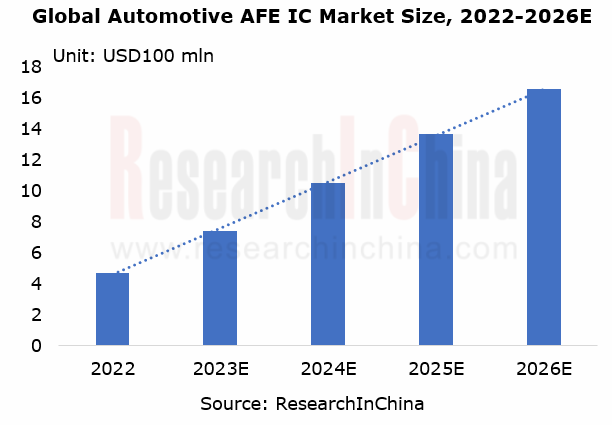
(2) Supply of automotive AFE ICs: the Chinese market relies on imports, creating a huge gap, so replacing foreign products with the homemade is a matter of great urgency.
High technical barriers, high automotive certification requirements, big challenges, and long cycle are constraints on the mass production of automotive AFE ICs in China. More than 90% of the AFE ICs used in vehicle power batteries still need to be imported. This market is monopolized by foreign analog chip giants like TI, ADI and Infineon. Chinese AFE IC vendors still make initial deployments in the automotive power battery field.
As a mainstream supplier in the automotive battery management integrated circuits (BMIC) market, TI has extended its order delivery time to 2023 as its BQ Series chips are out of stock and become more expensive, producing a large gap in the market.
Due to the gap between supply and demand in the Chinese automotive AFE IC market, domestic terminal manufacturers and lithium battery suppliers with strong demand for homemade chips are trying to enter the power BMIC segment from different angles.
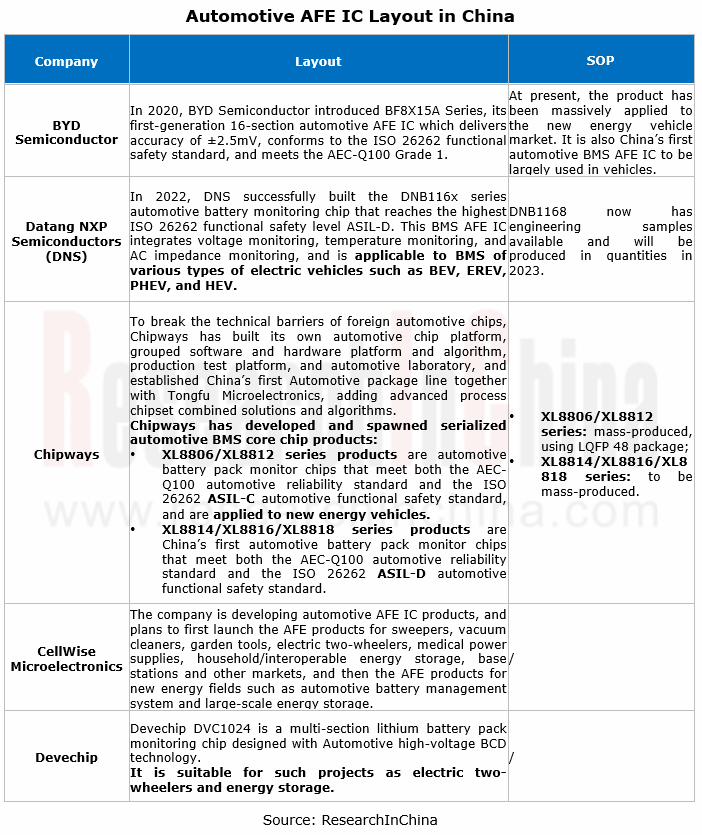
Chipways: it has made several breakthroughs in core technologies of BMS chipsets, including automotive BMS AFE sampling chip (ASIL C/D), automotive BMS digital isolation and communication interface chip, and automotive 32-bit microcontroller unit (MCU), and can provide complete grouped software development tools for product development.
Chipways’ XL8806/XL8812 series automotive battery pack monitor chips can meet both the AEC-Q100 automotive reliability standard and the ISO 26262 ASIL-C automotive functional safety standard. With LQFP 48 package, they can work in a temperature range of -40°C~125°C, single chip supporting 4 to 12 series of batteries. They adopt the high-precision ΣΔ ADC method with measurement accuracy up to ±1.5mV, and support multiple series of chips and master-slave reversible two-way communication.
The XL8814/XL8816/XL8818 series automotive battery pack monitor chips can meet the AEC-Q100 automotive reliability standard and the ISO 26262 ASIL-D automotive functional safety standard. They add another more than 30 safety mechanisms, reaching the ASIL D functional safety level. While ensuring the measurement accuracy, they increase the monitoring strings on a single chip. They support up to 14/16/18 battery strings in series, and control the measurement time within 120us. They feature the maximum built-in equalizing current of 400mA, and also add such capabilities as busbar monitoring, sleep monitoring and reverse wake-up.
Datang NXP Semiconductors (DNS): DNB1168 is a BMS AFE IC that integrates voltage monitoring, temperature monitoring, and AC impedance monitoring. It supports 250 rings of cascading chips, and daisy chain communication, and meets automotive certification, having passed the ISO 26262:2018 ASIL-D certification. For example, for thermal runaway that is hard to control in power batteries, DNB1168 solution uses the AC impedance monitoring function for rapid detection of thermal runaway. Compared with the conventional NTC (thermocouple) method, AC impedance monitoring can provide a second-level response, which greatly improves the safety threshold of power batteries and prolongs the service life of batteries.
DNS DNB1168 series automotive AFE ICs offer three benefits in application, namely, material saving, space saving, and faster and safer 3D monitoring. They are applicable to the BMS of various types of electric vehicles like BEV, EREV, PHEV, and HEV. DNB1168 now has engineering samples available and will start volume production in 2023.
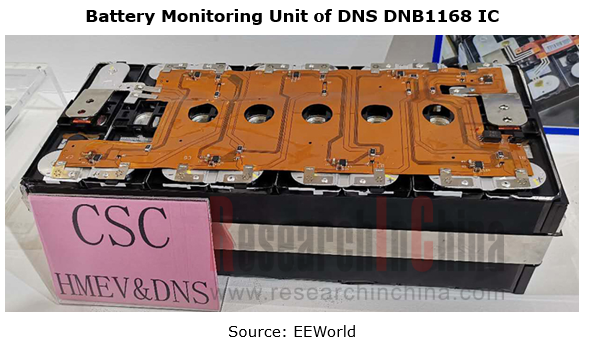
BYD Semiconductor: in 2020, it unveiled BF8X15A Series, its first-generation 16-section automotive AFE IC which delivers accuracy of ±2.5mV, conforms to the ISO 26262 functional safety standard, and meets the AEC-Q100 Grade 1.
In China automotive DC/DC ICs will enter the cycle of replacing foreign ones.
DC/DC ICs have a wide range of uses in automotive electronics, and apply to scenarios from vehicle intelligent cockpits, charging piles and motor controllers to on-board chargers and automotive lighting. At present, Chinese PMIC vendors successively achieve mass production of automotive products in categories like LDO and DC/DC.
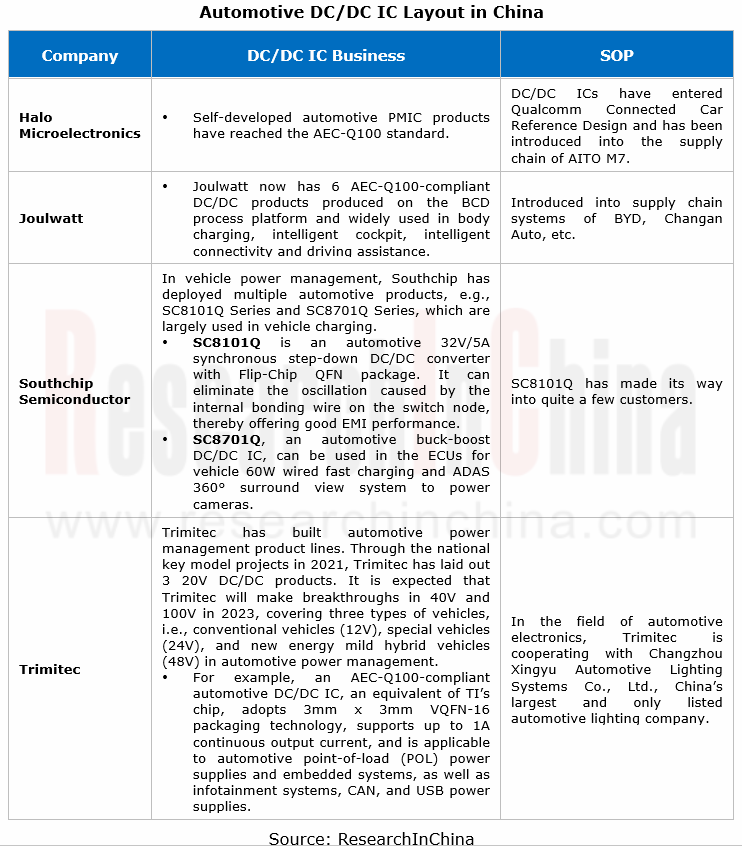
For vehicle charging, Southchip has launched SC8101Q series automotive 32V/5A synchronous step-down converter, and SC8701Q series automotive buck-boost chip, which can be used in ECUs for 60W wired fast charging and ADAS 360° surround view system to power cameras, as well as vehicle wireless charging. Currently they have been adopted by many Tier 1 suppliers, and have been seen in models of multiple brands like BYD, SAIC-GM, FAW Hongqi and Hyundai. They will be mounted on several overseas models soon.
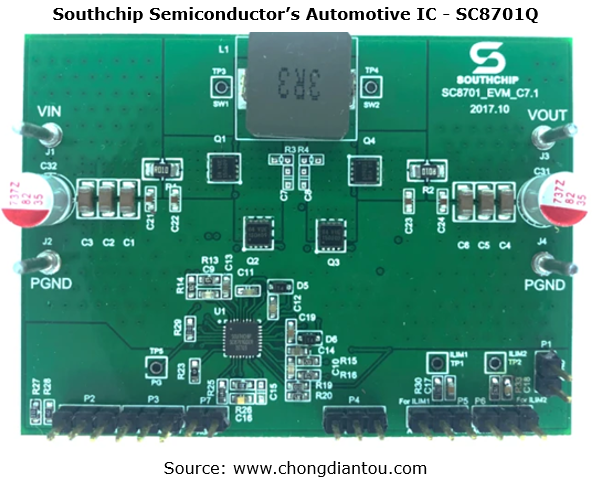
Chinese fabs make breakthroughs in BCD process, and the" crisis of chip shortage" revs up the localization of automotive PMICs.
PMICs pose relatively low requirements for manufacturing process instead of following Moore's Law. Compared with other types of integrated circuits, PMICs are a relatively mature and stable segment. At present, the mainstream mature process of PMICs is 8-inch process with nodes ranging from 0.32μm to 90nm. Fabs often use the special fabrication process of BCD (Bipolar-CMOS-DMOS), with many product numbers and types available. The market is highly fragmented.
In 2022, there was a structural shortage of chips in the automotive industry. Wherein, the 8-inch PMIC production capacity with mature process nodes above 0.18um felt much pinch. Giant IDMs like TI, Infineon, ADI, STMicroelectronics and NXP boast most automotive PMIC capacity. Other chip design firms (Fabless mode) need to obtain capacity from wafer foundries.
In China, SMIC, GTA Semiconductor, HHGrace and Nexchip Semiconductor among others all can provide PMIC wafer foundry services, and they are also stepping up the expansion of production lines with mature and characteristic process. In 2022, SMIC completed development of 55nm BCD process platform (high-voltage display driver platform), and introduced to customers for mass production. The vendor will play an extremely important role in industrial control, intelligent vehicles, display drivers, and power management. The current mainstream BCD process in the world is 180/130/90nm, and the industry's top level is 60nm.
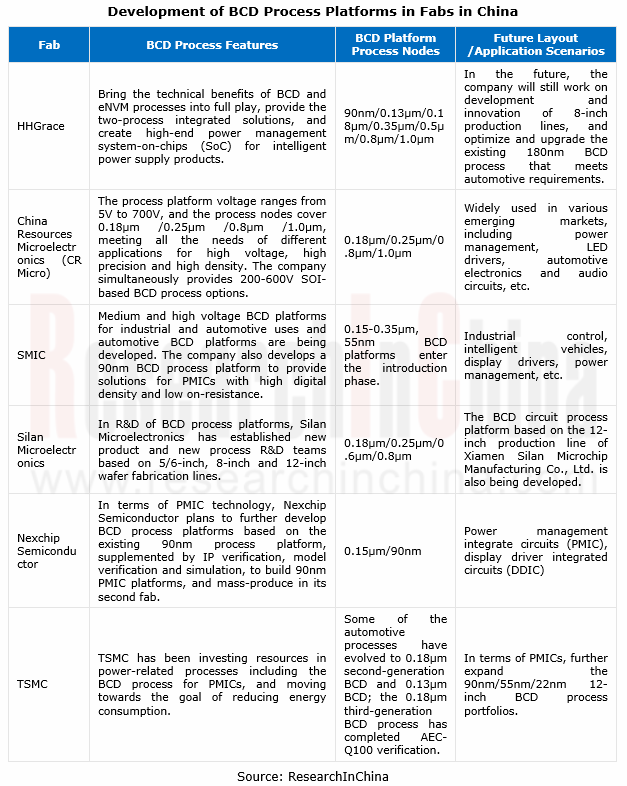
To deal with the surging demand from automotive and the insufficient capacity of automotive chips, wafer foundries like TSMC and UMC expand their automotive chip capacity. International IDMs have started large-scale capacity expansion while deploying their automotive chip capacity.
At present, the supply and demand in some automotive PMIC segments has improved, and the prices of some automotive chips have begun to be lowered, including driver ICs (e.g., LED driver and motor driver), PMICs, and some control ICs. Yet in the process of switching from fuel-powered vehicles to electric ones, the demand for the automotive products remains relatively stable, and the price will not take a nosedive.
This "crisis of chip shortage" buys more time for Chinese PMIC vendors to deploy automotive electronics and make breakthroughs in automotive PMICs, which accelerates the replacement of foreign automotive PMICs. Moreover, automakers also need to re-examine their industrial layout strategies in special circumstances, especially in cross-regional production and transportation of parts and components. The localization of the components supply chain may be more beneficial to organizing the whole supply chain, and build synergy with local vehicle dealers. Once force majeure hinders normal vehicle sales, components will also fell the pinch simultaneously. The big mismatch between supply and demand in the automotive PMIC market gives Chinese PMIC vendors scope for entry into the supply chain of the automotive industry.
Autonomous Driving Domain Controller and Central Computing Unit (CCU) Industry Report, 2025
Research on Autonomous Driving Domain Controllers: Monthly Penetration Rate Exceeded 30% for the First Time, and 700T+ Ultrahigh-compute Domain Controller Products Are Rapidly Installed in Vehicles
L...
China Automotive Lighting and Ambient Lighting System Research Report, 2025
Automotive Lighting System Research: In 2025H1, Autonomous Driving System (ADS) Marker Lamps Saw an 11-Fold Year-on-Year Growth and the Installation Rate of Automotive LED Lighting Approached 90...
Ecological Domain and Automotive Hardware Expansion Research Report, 2025
ResearchInChina has released the Ecological Domain and Automotive Hardware Expansion Research Report, 2025, which delves into the application of various automotive extended hardware, supplier ecologic...
Automotive Seating Innovation Technology Trend Research Report, 2025
Automotive Seating Research: With Popularization of Comfort Functions, How to Properly "Stack Functions" for Seating?
This report studies the status quo of seating technologies and functions in aspe...
Research Report on Chinese Suppliers’ Overseas Layout of Intelligent Driving, 2025
Research on Overseas Layout of Intelligent Driving: There Are Multiple Challenges in Overseas Layout, and Light-Asset Cooperation with Foreign Suppliers Emerges as the Optimal Solution at Present
20...
High-Voltage Power Supply in New Energy Vehicle (BMS, BDU, Relay, Integrated Battery Box) Research Report, 2025
The high-voltage power supply system is a core component of new energy vehicles. The battery pack serves as the central energy source, with the capacity of power battery affecting the vehicle's range,...
Automotive Radio Frequency System-on-Chip (RF SoC) and Module Research Report, 2025
Automotive RF SoC Research: The Pace of Introducing "Nerve Endings" such as UWB, NTN Satellite Communication, NearLink, and WIFI into Intelligent Vehicles Quickens
RF SoC (Radio Frequency Syst...
Automotive Power Management ICs and Signal Chain Chips Industry Research Report, 2025
Analog chips are used to process continuous analog signals from the natural world, such as light, sound, electricity/magnetism, position/speed/acceleration, and temperature. They are mainly composed o...
Global and China Electronic Rearview Mirror Industry Report, 2025
Based on the installation location, electronic rearview mirrors can be divided into electronic interior rearview mirrors (i.e., streaming media rearview mirrors) and electronic exterior rearview mirro...
Intelligent Cockpit Tier 1 Supplier Research Report, 2025 (Chinese Companies)
Intelligent Cockpit Tier1 Suppliers Research: Emerging AI Cockpit Products Fuel Layout of Full-Scenario Cockpit Ecosystem
This report mainly analyzes the current layout, innovative products, and deve...
Next-generation Central and Zonal Communication Network Topology and Chip Industry Research Report, 2025
The automotive E/E architecture is evolving towards a "central computing + zonal control" architecture, where the central computing platform is responsible for high-computing-power tasks, and zonal co...
Vehicle-road-cloud Integration and C-V2X Industry Research Report, 2025
Vehicle-side C-V2X Application Scenarios: Transition from R16 to R17, Providing a Communication Base for High-level Autonomous Driving, with the C-V2X On-board Explosion Period Approaching
In 2024, t...
Intelligent Cockpit Patent Analysis Report, 2025
Patent Trend: Three Major Directions of Intelligent Cockpits in 2025
This report explores the development trends of cutting-edge intelligent cockpits from the perspective of patents. The research sco...
Smart Car Information Security (Cybersecurity and Data Security) Research Report, 2025
Research on Automotive Information Security: AI Fusion Intelligent Protection and Ecological Collaboration Ensure Cybersecurity and Data Security
At present, what are the security risks faced by inte...
New Energy Vehicle 800-1000V High-Voltage Architecture and Supply Chain Research Report, 2025
Research on 800-1000V Architecture: to be installed in over 7 million vehicles in 2030, marking the arrival of the era of full-domain high voltage and megawatt supercharging.
In 2025, the 800-1000V h...
Foreign Tier 1 ADAS Suppliers Industry Research Report 2025
Research on Overseas Tier 1 ADAS Suppliers: Three Paths for Foreign Enterprises to Transfer to NOA
Foreign Tier 1 ADAS suppliers are obviously lagging behind in the field of NOA.
In 2024, Aptiv (2.6...
VLA Large Model Applications in Automotive and Robotics Research Report, 2025
ResearchInChina releases "VLA Large Model Applications in Automotive and Robotics Research Report, 2025": The report summarizes and analyzes the technical origin, development stages, application cases...
OEMs’ Next-generation In-vehicle Infotainment (IVI) System Trends Report, 2025
ResearchInChina releases the "OEMs’ Next-generation In-vehicle Infotainment (IVI) System Trends Report, 2025", which sorts out iterative development context of mainstream automakers in terms of infota...